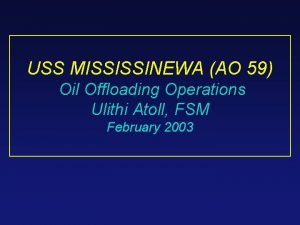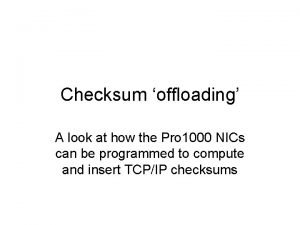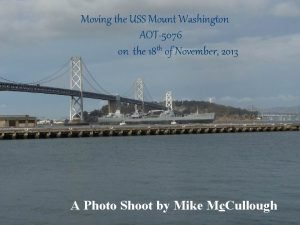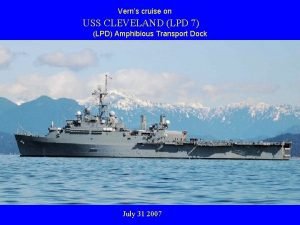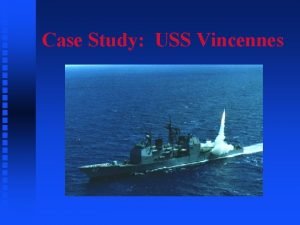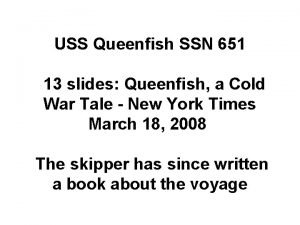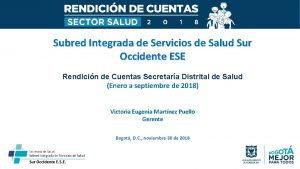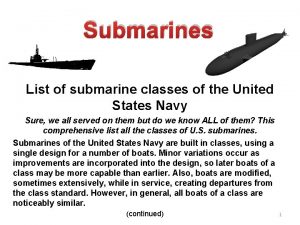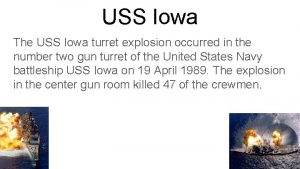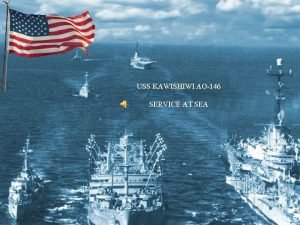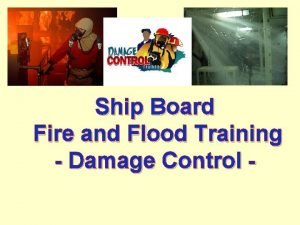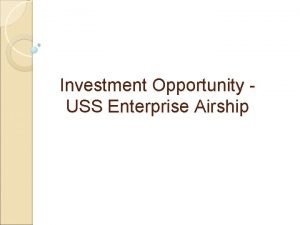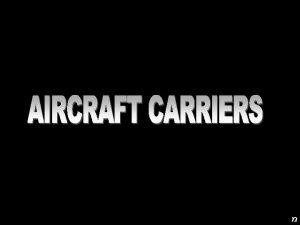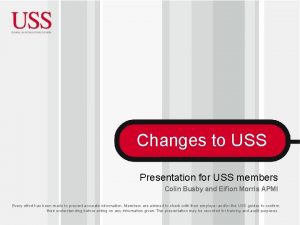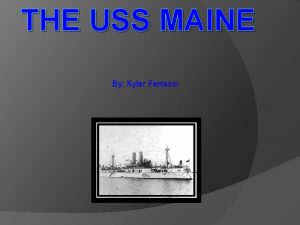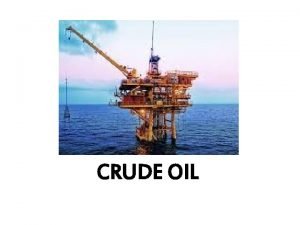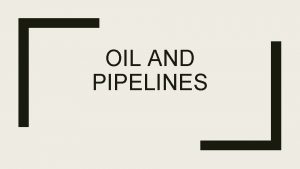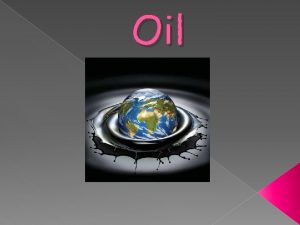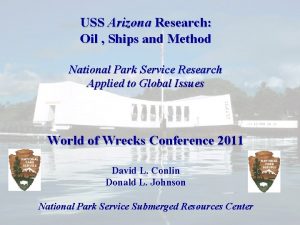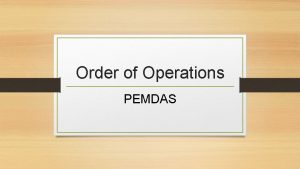USS MISSISSINEWA AO 59 Oil Offloading Operations Ulithi





















- Slides: 21

USS MISSISSINEWA (AO 59) Oil Offloading Operations Ulithi Atoll, FSM February 2003

NAVSEA SUPSALV Mission Responsible for technical support to Fleet in areas of: • Marine Salvage • Diving • Underwater Search & Recovery • Offshore Oil Spill Response • Underwater Ship Husbandry Maintains salvage contracts to augment Fleet capability Maintains ESSM System (pre-positioned emergency ship salvage and pollution response material)

ESSM Gear in action

Sinking of the Mississinewa • November 20, 1944 • 63 U. S. personnel lost • 3, 780, 000 gallons of oil on board at sinking • Sunk in 130 feet

USS Mississinewa at Ulithi Atoll Yap State, Federated States of Micronesia Ulithi Atoll

Recent History • Wreck located April 2001 • Oil reported leaking, August 2001 YAP, FSM & USCG / NOAA Survey • First Navy Response – Patch & Pump (Aug 2001) • Second Leak & Response (Dec-Jan 2001)

Need for Additional Response (Offloading) • Risk of Continued Intermittent Oil Leaks • Risk of Future Catastrophic Oil Release • Wreck’s 22 tanks contained estimated 2. 8 M gallons of oil • Proximity to Pristine Subsistence Fishing Grounds • Sea Turtles, Marine Birds, Intertidal and Subtidal Habitats

Offloading Plan • • • Oil Removal - Through the hull – “Hot Tap” Equipment Surface-supplied (air) Diving Proven Tools and Equipment Aggressive Search for Oil Personnel Safety Environmental Safety Hot Tap System

Logistics – Getting to the site

Operational Criteria • Independent vessel-based operation (no facilities ashore) • Need to remain on-station until completion • Minimize pollution risk • Remove all pumpable oil in accessible tanks • Proper disposal of oil and all wastes

Pumping Arrangement – Option One Sampling & Monitoring Station “Donut Pump” Hot Tap Valves Manifold

Resources • Vessels • USS Salvor (ARS 52) – Navy diving support platform • Primary support barge & tug • Additional barge and tug • Personnel – Salvor, MDSU, EODMU, SUPSALV & contractors • Equipment - supplied by ESSM (hot taps, pumps, etc. ) • Diving - surface-supplied; recompression chamber; communications (Salvor, MDSU, & EOD MU 5) • Pollution response equipment (ESSM)

Response Vessel - Barge Fels 20 loaded with ESSM salvage and oil recovery gear

Oil Spill Mitigation • Spill Response Plan V-Boom Skimming System • Containment • Oil Recovery • Dispersant Plan • Wildlife Plan • Storage & Disposal Dispersant Package Dispersant Spray System

Installing the 6 -point moor

Vessels Operational Configuration

Diver training to use Hot-Tap pumping system - Honolulu Divers topside – Ulithi during operation

Underwater Operations

Pumps

Pumping Operations

Operational Summary • Installed 20 Hot Taps & Secured with Caps after Pumping • Cut Access into Two Tanks for Internal Tank Access (& Secured) • Removed All Accessible Oil from 21 Tanks, Engine Room, Pump Room, and Previously-Leaking Piping • Transferred Approximately 1. 95 Million Gallons of Oil from Mississinewa to Barge, including approximately 7% Free Water • Successfully completed ahead of schedule • Est. less than 5 gallons of Oil Released – No Environmental Impact • Mississinewa Oil to be Sold in Singapore and Recycled
 Uss mississinewa wreck
Uss mississinewa wreck Tmo: transparent memory offloading in datacenters
Tmo: transparent memory offloading in datacenters Checksum offloading
Checksum offloading Data warehouse offloading
Data warehouse offloading Creaming test for emulsion
Creaming test for emulsion Antalya il sağlık müdürlüğü kds
Antalya il sağlık müdürlüğü kds Ss mount washington
Ss mount washington Uss cleveland (lpd-7)
Uss cleveland (lpd-7) Uss vincennes case study
Uss vincennes case study Uss monitor engine
Uss monitor engine Uss slides
Uss slides Uss 51 zona franca
Uss 51 zona franca Uss venture
Uss venture Facsa uss
Facsa uss Uss grayback
Uss grayback Kendall truitt
Kendall truitt Uss kawishiwi
Uss kawishiwi The flame in the flood trainer
The flame in the flood trainer Chuchuhasi
Chuchuhasi Ibm maximo for oil and gas
Ibm maximo for oil and gas Crisis communication skills
Crisis communication skills Standard oil political cartoon
Standard oil political cartoon
